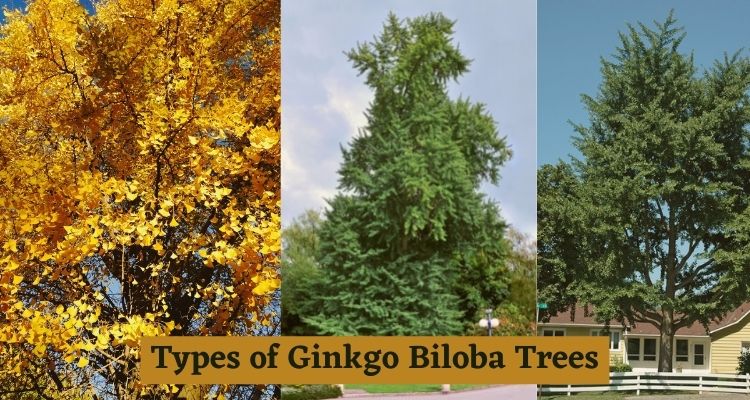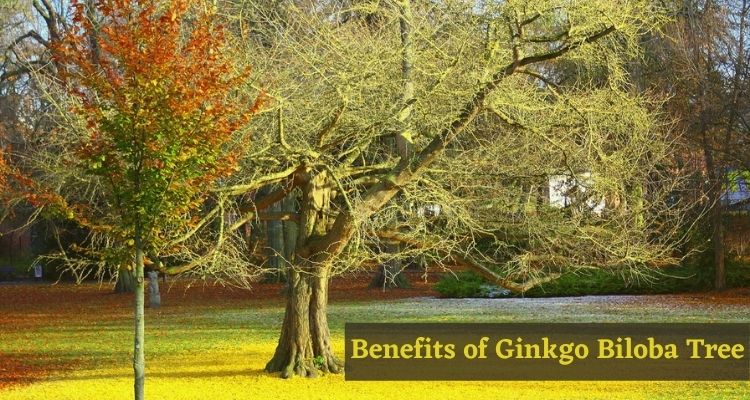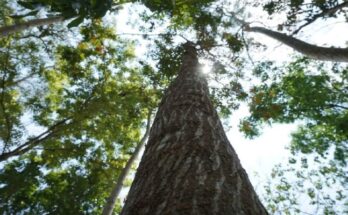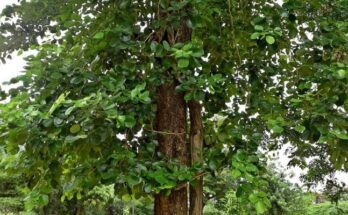|
Getting your Trinity Audio player ready...
|
About Ginkgo Biloba Tree
Gingko trees are sturdy, deciduous shade trees with unique fan-shaped leaves that are related to a primitive tree family that was found in China 160 million years ago. As the oldest living tree species globally, geological evidence of ginkgos was valid until the Mesozoic about 200 million years ago! Ginkgo trees are planted around temples in Japan and are considered sacred. These trees produce an herbal product that is popular around the world, especially in Asian cultures.
The ancient medicinal by-product of ginkgo trees is extracted from the seeds of the tree. Ginkgo biloba has long been touted for its memory/focus improvement benefits (Alzheimer’s disease and dementia) in MS symptoms.
Physical Description of Ginkgo Tree

It is pyramidal in shape with a columnar, sparsely branched trunk that is up to 30 meters (100 feet) tall and 2.5 meters (8 feet) in diameter. The cracked bark is greyish, deeply furrowed in older trees, and has a corky texture. Its leaves are up to 8 cm long and sometimes twice as wide.
From the attachment point of the long stem, two parallel veins penetrate each leaf and branch out several times towards the leaf margins. In summer, dull green-gray to green-yellow, in autumn golden-yellow, stay on the tree until the end of the season, then quickly fall off.
Here are 6 Types of Ginkgo Biloba Trees

Ginkgo Tree Varieties: A male ginkgo tree is the best addition to most gardens. And you can choose the growth habit, size, and other characteristics by selecting from several types of ginkgo trees:
1. Fairmont: It is columnar ginkgo, which means that its growth is narrow and upright. As a result, it’s a great option for tight spaces with lots of vertical space.
2. Princeton Guard Post: Also, a columnar variety is slightly taller and broader than Fairmont and grows relatively quickly.
3. Golden Autumn: Autumn Gold is a covered tree, ideal for places where you have plenty of space and want shade. It will be up to 15 meters high and 11 meters wide.
4. Hunt for Manhattan: This is shrub-like dwarf ginkgo that only grows to about 2 meters tall.
5. Majestic Butterfly: This species has varied green leaves with yellow stripes. It is also a smaller tree that is only 10 feet tall when fully grown.
6. Ginkgo Top: The variety of lace owes its name to its leaves, which have a textured edge that gives it the look of lace.
6 Amazing Benefits of Ginkgo Biloba Tree

1. It can be Good for Your Brain – As Wan explains above; Ginkgo Biloba increases your body blood flow, including your brain, which is essential in keeping your mind sharp and healthy.
2. It can Improve Kidney Health – Because of its antioxidant content, researchers discovered that it stimulates kidney function in rats. In addition, when the rats were given the herb, it could preserve their bodies from the effects of toxic heavy metal particles better and faster than the rats that did not have Ginkgo Biloba.
3. It can Help Reduce Inflammation – Gingko increases blood flow, so blood flow helps reduce inflammation in certain areas of the body, especially the lower back, knees, and brain.
4. It Could Help with Anxiety – When you see a TCM expert, don’t be surprised if they recommend increasing your ginkgo intake. “The gink leaf
5. It can Help with Headaches – Some small studies have confirmed the effectiveness of using ginkgo for migraines in women, and it has long been used as an approved TCM remedy for headaches. So if your basic remedies aren’t helping, this might be one of them to consider.
6. It Might Make PMS Less Harmful – As if all of the above benefits weren’t reason enough to consume more ginkgo, the herb could also relieve PMS symptoms, both for cramps and moods. Moreover, it worked in a small, double-blind, randomized study that looks very promising.
Conclusion
It was when ginkgo seemed like a magic bullet for preventing age-related memory loss and other health problems. But research to date doesn’t support much enthusiasm. Most of the evidence for ginkgo is anecdotal or decades old. Still, research has shown that ginkgo can help in the progression of Alzheimer’s disease, and treat some common mental health problems, improve sexual function, and improve blood flow to peripheral arteries.
So start taking ginkgo to treat serious illnesses by consulting your doctor. Here we have explained all the benefits and types of Ginkgo Biloba tree. Comment below if you have any queries regarding this tree or share your opinion.



